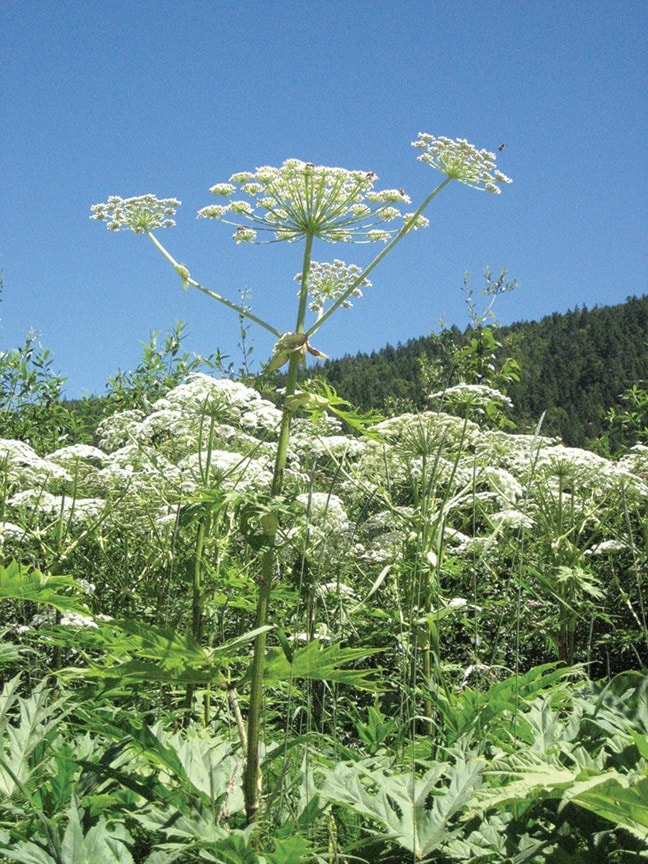Two boys who developed a skin reaction from a plant species they were clearing near their school in Metchosin can feel lucky it wasn’t giant hogweed.
The plants in question, which had grown in a Garry oak meadow on the edge of the West-Mont Montessori School grounds, turned out to be cow parsnip, or Heracleum maximum. It’s a native species and member of the carrot family that has mild photoreactive properties, meaning its secretions can cause minor irritation or blistering in people with more sensitive skin.
Cow parsnip, although generally much smaller and featuring different physical characteristics, resembles giant hogweed. That invasive species contains a highly toxic sap on its leaves and stem hairs which can cause hypersensitivity to the sun if contacted on the skin. Both have umbrella-like clusters of white flowers at the end of long stems, but the leaves are different and hogweed can grow to five or six metres high, compared to a maximum of about two metres for cow parsnip.
Rachelle McElroy is executive director with the Saanich-based Coastal Invasive Species Committee, which works with municipal and regional jurisdictions to combat invasive species here. She said one of their subcontractors visited the school and treated the plants with a herbicide, a rare move given that cow parsnip is native, but one taken due to the reaction it caused.
While the boys did suffer some discomfort, she said the incident – and the time of year – provide a good opportunity to learn the difference between cow parsnip and the dreaded giant hogweed, and to identify other invasive species or potentially harmful plants.
“I think the message here is that not all plants are created equal,” she said. “It’s important, as part of environmental education and to know for yourself, about certain types of plants.”
Private property owners such as the school are responsible for taking care of their own land, McElroy said. On public land, the various municipal and regional jurisdictions, working with Coastal ISC contractors, have combined to do a good job of controlling hogweed in the region, she said.
While her group fields many calls at this time of year from people either reporting hogweed or asking questions about what they might have discovered, most often the plant in question is cow parsnip or one of several similar looking native plants.
Volunteer Peter Giles of Metchosin, who helps tend the vegetable and flower gardens at the Montessori school, asked the boys to cut the tops off the plants in question and put them in a bucket. He initially thought they were Queen Anne’s lace, a form of wild carrot, but was surprised at the reaction the boys had.
“For a novice like myself, there’s a three or four other things it could look like,” he said.
For more information on differences between the plants watch a YouTube video by the Invasive Species Council of Metro Vancouver at http://www.bit.ly/1uirpeL, visit coastalisc.com and click on invasive species, or call 250-857-2472.
editor@goldstreamgazette.com
